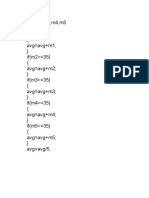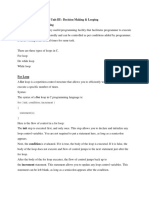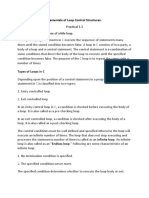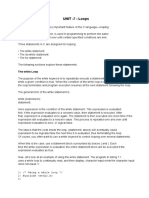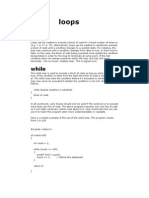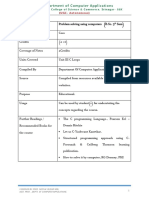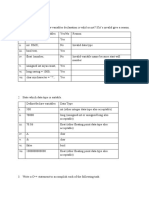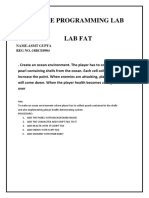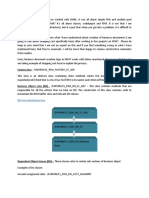0% found this document useful (0 votes)
28 views3 pagesLoop in C
The document explains loops in C programming, highlighting their benefits such as code reusability, efficiency, and structured control flow. It details the two types of loops: entry controlled (for and while loops) and exit controlled (do-while loop), along with their syntax and execution flow. Additionally, it compares while and do-while loops, emphasizing their differences in execution and condition checking.
Uploaded by
subhadip01dCopyright
© © All Rights Reserved
We take content rights seriously. If you suspect this is your content, claim it here.
Available Formats
Download as PDF, TXT or read online on Scribd
0% found this document useful (0 votes)
28 views3 pagesLoop in C
The document explains loops in C programming, highlighting their benefits such as code reusability, efficiency, and structured control flow. It details the two types of loops: entry controlled (for and while loops) and exit controlled (do-while loop), along with their syntax and execution flow. Additionally, it compares while and do-while loops, emphasizing their differences in execution and condition checking.
Uploaded by
subhadip01dCopyright
© © All Rights Reserved
We take content rights seriously. If you suspect this is your content, claim it here.
Available Formats
Download as PDF, TXT or read online on Scribd
/ 3







